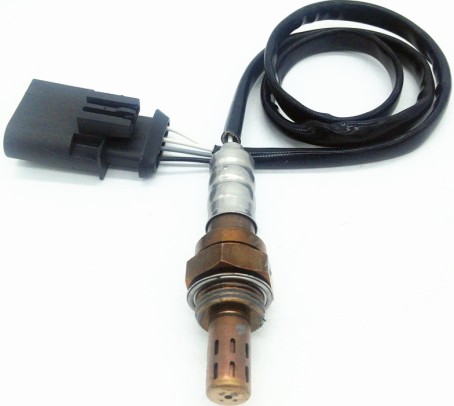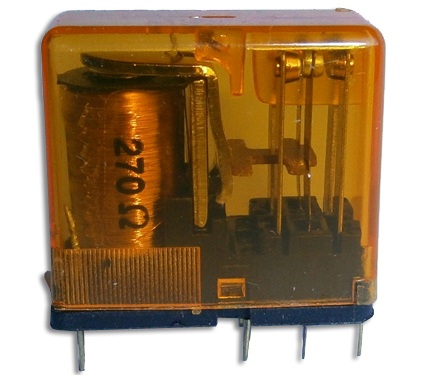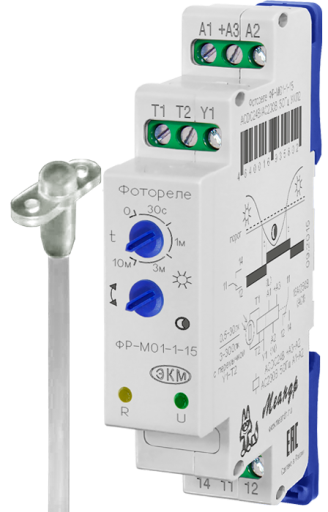Sensors and relays - what's the difference
Someone who is far from this topic may have a question: what is the difference between a sensor and a relay? Let's answer this question. A sensor and a relay are completely different things. If a sensor is essentially a measuring instrument, then a relay is a switching instrument. As you can see, the difference is very significant and generally fundamental.
Sensor
A sensor is a structurally separate element of a measuring or regulating system, designed to convert a measured physical quantity into a signal convenient for reading or further use and processing, i.e. the task of the sensor is to generate a signal indicating the current measurements. At the same time, the information coming from the sensor is transmitted for processing, transformation or storage in a form convenient for this, but is not provided directly to the observer or the equipment.
Sensors are either electronic or mechanical, usually used to measure some physical quantity and convert it into another physical quantity convenient for equipment or personnel. For example, the measured temperature value (thermocouple) or magnetic induction (Hall sensor) can be converted into a certain amount of electrical voltage or current.

Today, sensors are widely used in various scientific studies for the purpose of recording parameters, in telemetry, in quality control and in various tests.
Automated control systems and many systems where it is necessary to obtain measurement information are unthinkable without sensors: process control systems or devices, regulation and alarm systems.
Quantities such as velocity, pressure, displacement, temperature, voltage, flow rate, concentration, current and frequency are converted into optical, electrical or pneumatic signals, convenient for measuring, converting, recording, transmitting and storing information about the current state of the system or object of control or management.
An electronic sensor, for example, consists of a sensitive element and a transducer, where the main characteristics are the measurement range, sensitivity and error.
Historically, sensors have been inextricably linked with measuring devices and measuring technology in general: barometers, thermometers, speedometers, flowmeters, etc.
The term «sensor» is a generalized concept that has become stronger in connection with the spread of automatic control systems, where the sensor is an element of the logical chain: sensor — control device — executive body — control object.
Relay
A relay — essentially key, electronic or electromagnetic, designed to switch, open and close an electrical circuit in response to input action on the relay. This input can be either electrical or non-electrical.

When they say "relay" they usually mean it electromagnetic relay, that is, a device that opens or closes the contacts at the moment of applying voltage to the relay coil, which generates a current in the coil, which in turn creates a magnetic field, which leads to mechanical movement (attraction) of the ferromagnetic armature of the relay.
The armature is connected to mechanical contacts and moves with them, which causes the external circuit to close or open. Before that, special relays were very common, used as blinker switches in VAZ cars.
The main parts of the electromagnetic relay at all times were and remain: an electromagnet, an armature and a switch. Electromagnet It is a relay coil wound on a ferromagnetic yoke. A plate of magnetic material acts as an anchor; it acts on the contacts through the pushers.
Relay and sensor
The term «relay» usually refers to various devices that switch contacts in response to a change in some input quantity, not necessarily electrical.
So there are «thermal relays» that respond to temperature changes, «photo relays» that respond to light level, «acoustic relays» that respond to sound. In fact, these are sensors connected to relays and interacting with them according to a certain algorithm.

The word «relay» is sometimes called timers, for example «time relay» - a timer is connected in a circuit with some device and turns it on / off at intervals counted by an electronic timer that only gives an input signal to a relay to trigger.
For example, a room fan runs for a few minutes, then turns off and then turns on again after a few minutes — here we can say that the timer controls the action of the relay.
There is also a whole class of solid state switches on the market called solid state relays… These devices work like an electromagnetic relay — an input signal is given and the device switches the operating circuit. But there is no electromagnetic unit, no armature, it is replaced by transistors, thyristors and triacs.
